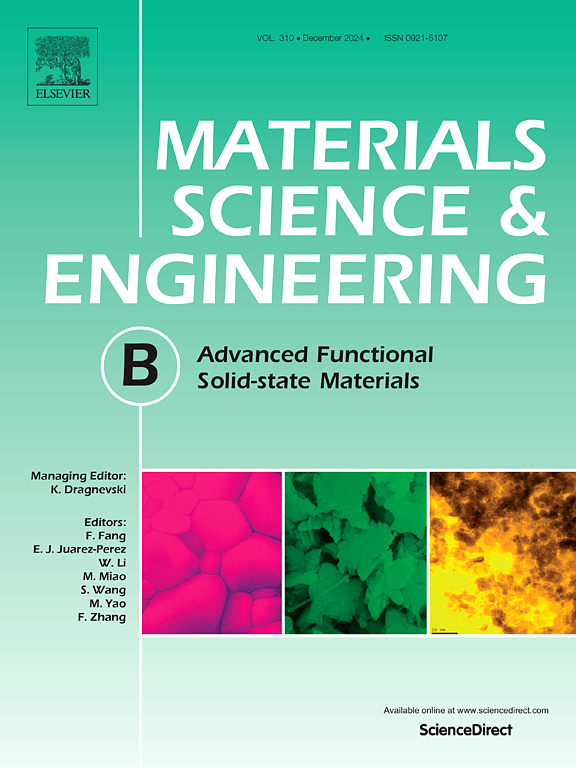用于锂离子电池的高性能PVDF/海泡石复合分离器
IF 4.6
3区 材料科学
Q2 MATERIALS SCIENCE, MULTIDISCIPLINARY
引用次数: 0
摘要
PVDF具有较高的极性,与电解质具有较好的亲和力,其较高的介电常数促进了锂离子的解离。海泡石具有独特的纤维状形态,形成丰富的孔隙结构,可以增强隔膜的比表面积和热稳定性。本文采用静电纺丝技术制备了PVDF/海泡石复合分离器。利用PVDF的高极性、高介电常数和海泡石的特殊结构,该复合隔膜具有优异的电解质吸附性能和电化学性能。它具有高离子电导率(3.04 × 10-3 S·cm−1)和高锂离子转移数(tLi+ = 0.781),具有优异的倍率容量(即使在5C下也能达到110mAh g−1)和循环性能(0.5C下250次循环后容量保持率为99%)。添加适量海泡石可提高复合分离器的热稳定性和电化学性能。本文章由计算机程序翻译,如有差异,请以英文原文为准。
High-performance PVDF/Sepiolite composite separator for Li-ion batteries
PVDF has a relatively high polarity leading to better affinity with electrolyte, and its relatively high dielectric constant promotes the dissociation of lithium ions. Sepiolite has a unique fibrous morphology, forming a rich pore structure, which can enhance the specific surface area and thermal stability of separators. In this work, the PVDF/sepiolite composite separator is prepared by electrospinning technology. Benefiting from the high polarity and dielectric constant of PVDF and the special structure of sepiolite, the composite separator reveals excellent electrolyte adsorption and electrochemical performance. It shows a high ionic conductivity (3.04 × 10-3 S·cm−1) and a high lithium-ion transference number ( = 0.781), With excellent rate capacity (110mAh g−1 even at 5C) and cycle performance (∼165mAh g−1 after 250 cycles at 0.5C with a capacity retention of 99 %). The thermal stability and electrochemical performance of the composite separator is enhanced by adding appropriate amount of sepiolite.
求助全文
通过发布文献求助,成功后即可免费获取论文全文。
去求助
来源期刊

Materials Science and Engineering: B
工程技术-材料科学:综合
CiteScore
5.60
自引率
2.80%
发文量
481
审稿时长
3.5 months
期刊介绍:
The journal provides an international medium for the publication of theoretical and experimental studies and reviews related to the electronic, electrochemical, ionic, magnetic, optical, and biosensing properties of solid state materials in bulk, thin film and particulate forms. Papers dealing with synthesis, processing, characterization, structure, physical properties and computational aspects of nano-crystalline, crystalline, amorphous and glassy forms of ceramics, semiconductors, layered insertion compounds, low-dimensional compounds and systems, fast-ion conductors, polymers and dielectrics are viewed as suitable for publication. Articles focused on nano-structured aspects of these advanced solid-state materials will also be considered suitable.
 求助内容:
求助内容: 应助结果提醒方式:
应助结果提醒方式:


